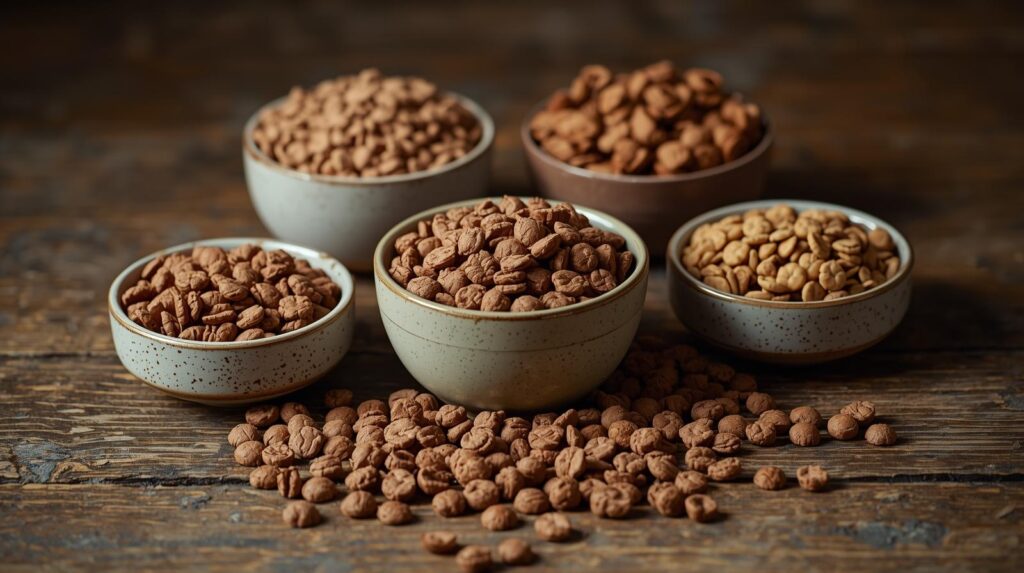Complete Guide to Dog Wellness: Diet, Health & Care Tips
Dog wellness is the cornerstone of a long, happy life for your canine companion, but ensuring their long-term health requires attention to their diet, physical well-being, and daily care. This comprehensive guide draws from expert veterinary sources to help you provide balanced nutrition, prevent common health issues, and maintain your pup’s overall happiness. Always consult your veterinarian for personalized advice, as every dog’s needs vary by age, breed, size, and activity level.
1. Understanding Dog Nutrition: Building a Balanced Diet
A dog’s diet must be complete and balanced, providing all essential nutrients: proteins, fats, carbohydrates, vitamins, minerals, and water. Per the Association of American Feed Control Officials (AAFCO), commercial foods labeled “complete” meet these standards. Key nutrients include:
- Proteins: Essential for muscle repair and growth. Dogs need 10 essential amino acids, best sourced from animal proteins (chicken, beef, fish). Plant-based proteins are less digestible but can work with vet guidance.
- Fats: Provide energy and support skin/coat health. Omega-3 and omega-6 fatty acids (e.g., from fish oil) reduce inflammation and promote a shiny coat.
- Carbohydrates: Not essential but provide energy and fiber. Grains (oats, barley), veggies, or legumes aid digestion and prevent issues like constipation. Aim for 30-60% in dry kibble.
- Vitamins & Minerals: Support immunity and bone health. Antioxidants (vitamins A, C, E) are key for seniors to combat aging.
- Fiber: Promotes gut health and stable blood sugar. High-fiber diets help with weight management and conditions like diabetes.
Life-Stage Diets:
| Life Stage | Key Needs | Example Foods |
|---|---|---|
| Puppy (up to 12-18 months) | High protein/fat for growth; 3-4 small meals/day. | Puppy kibble with DHA for brain development. Transition foods over 7-10 days. |
| Adult (1-7 years) | Balanced for maintenance; 2 meals/day. Adjust for activity. | Complete kibble (grain or grain-free). Wholesome grains boost immunity. |
| Senior (7+ years) | Lower calories, joint support (glucosamine), antioxidants. | Senior formulas with fiber for digestion; monitor weight gain. |
Food Types:
- Dry Kibble: Affordable, helps dental health; store airtight.
- Wet Food: Hydrating, great for picky eaters; can mix with kibble.
- Raw/Fresh/Home-Cooked: Popular but risky (bacterial contamination). Use vet-approved recipes to avoid deficiencies.
- Grain-Free vs. Grain-Inclusive: Both work; grains provide antioxidants. Choose based on allergies.
Portion Control: Overfeeding causes obesity, increasing risks of diabetes, arthritis, and heart disease. Use body condition scoring: ribs should be felt (not seen), with a visible waist. Feed 2-3% of body weight daily, split into meals. Limit treats to 10% of calories.

2. Safe and Healthy Treats & Add-Ins
Treats are great for training but shouldn’t exceed 10% of daily calories. Choose nutrient-dense options:
- Proteins: Cooked eggs (vitamins A, B, D, K; selenium), plain yogurt (probiotics), canned fish (omegas).
- Veggies/Fruits: Carrots, broccoli, snap peas (low-cal fiber), pumpkin (aids digestion), blueberries (antioxidants). Use sparingly—dogs don’t need much.
- Avoid: Chocolate, grapes, onions, xylitol (in some peanut butters), raw eggs (salmonella risk).
Pro Tip: Add toppers like Dog Wellness CORE Bowl Boosters (meats, veggies, enzymes) for flavor without unbalancing the diet.
3. Health Monitoring and Prevention
Regular vet check-ups catch issues early. Key areas:
- Weight Management: Obesity affects 59% of dogs. Weekly weigh-ins; use low-cal treats.
- Dental Health: Brush 2-3x/week; kibble reduces plaque. Watch for bad breath or tartar. Annual cleanings prevent heart/kidney issues.
- Vaccinations & Parasite Control: Core vaccines (rabies, distemper); year-round flea/tick/heartworm preventives.
- Common Issues:
- Skin/Coat: Dull fur? Boost omegas; check for allergies.
- Joints: Seniors need glucosamine-rich foods/exercise.
- Digestion: Bland diets (chicken/rice) for short-term upset; chronic issues need a vet nutritionist.
- Senior-Specific: Antioxidants slow chronic diseases; consistent routines reduce stress.
4. Exercise, Grooming, and Daily Care
- Exercise: 30-120 minutes daily (walks, play). Match to diet calories; prevents behavior issues.
- Grooming: Weekly brushing reduces shedding; monthly baths. Check ears/paws for infections.
- Mental Stimulation: Puzzle toys, training keep them sharp.
- Water: Always fresh; 1 oz per lb body weight daily.

Final Tips for Lifelong Dog Wellness
- Vet Partnership: Annual exams; discuss diet changes. For special diets (e.g., vegan), consult a board-certified nutritionist.
- Transitioning Foods: Gradual over 7-10 days to avoid digestive upset.
- Red Flags: Sudden weight changes, lethargy, vomiting—see a vet immediately.
By focusing on tailored nutrition and proactive care, your dog can thrive for years. For more, check trusted sites like PetMD or ASPCA.
Conclusion: Empowering Your Dog’s Thriving Life
In wrapping up this complete guide to dog wellness, it’s clear that a holistic approach—combining a nutrient-rich, life-stage-appropriate diet with proactive health monitoring, regular exercise, and tender daily care—forms the foundation of a happy, healthy canine companion. From selecting balanced kibble or fresh toppers to brushing teeth and hitting the trails together, these simple yet impactful steps can prevent common pitfalls like obesity or joint issues while boosting your dog’s vitality and longevity.
Remember, no two dogs are alike, so partnering with your veterinarian is key to customizing these tips to your pup’s unique needs. By investing time and intention into their wellness today, you’ll not only extend their playful years but also deepen the unbreakable bond you share. Here’s to many more tail-wags, belly rubs, and joyful adventures—your dog thanks you for it! If you’re ready to tweak their routine, schedule that next vet visit and watch the magic unfold. 🐶✨
